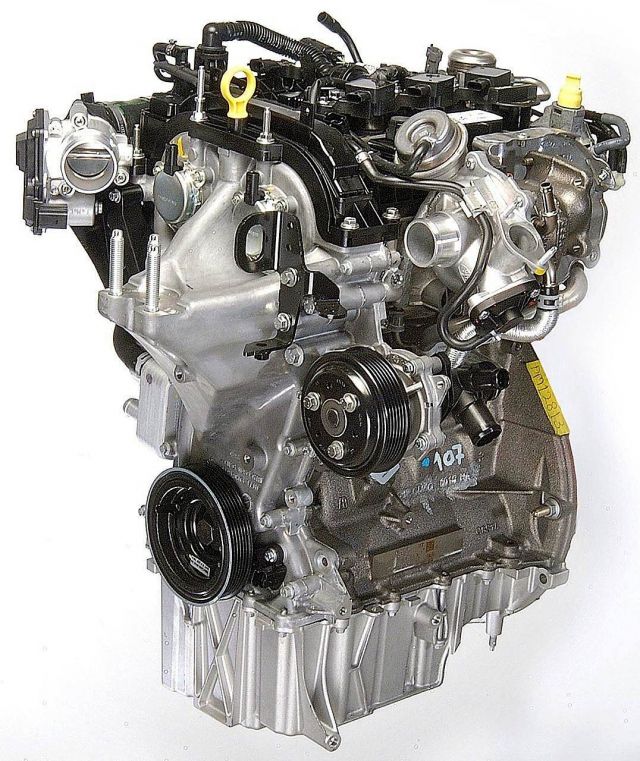Ford just announced it will EPA certify the European-bred 1.0-liter EcoBoost engine for use in the 2014 Fiesta. The automaker says Fiesta with the boosted 3-cylinder engine could be the most fuel-efficient non-hybrid available in the U.S.
The 1.0L EcoBoost with its incredibly tiny turbocharger first served notice in September it could be a performance contender when it powered a Formula Ford racecar around the 12.9-mile Nurburgring circuit in a very fast time of 7:22. That’s quicker than a Ferrari Enzo, Lamborghini Aventador or Pagini Zonda. Of course, the Formula Ford only weighs about 1,135 pounds — even with some “street” equipment bolted on.
The engine in that car was basically a stock 1.0L EcoBoost with a just a few necessary modifications for packaging and durability.
“We added a dry sump so the engine would fit in the car,” explains Mike Norton, motorsports manager for Ford of Europe who spoke to EngineLabs at the SEMA show. “Also to stop the oil from surging in the turns.”
 In stock form, the turbocharged 1.0L EcoBoost is good for about 123 horsepower with peak torque of 148 lb-ft. The engine in the Formula Ford would likely pull between 202 and 213 horsepower on the dyno with a redline of 7,000 rpm.
In stock form, the turbocharged 1.0L EcoBoost is good for about 123 horsepower with peak torque of 148 lb-ft. The engine in the Formula Ford would likely pull between 202 and 213 horsepower on the dyno with a redline of 7,000 rpm.
“We recalibrated ECU to take advantage of 105 octane fuel,” adds Norton. “The stock fuel map goes up to 95 octane. The goal was to give the engine a more progressive torque curve.”
The direct-injected EcoBoost has a few unusual design elements, such as an offset crankshaft, variable oil pump, external balancing (to compensate for the lack of a balance shaft) and the timing belt is immersed in engine oil. Norton’s team changed nothing on the engine.
“There was no cam change, no different valve springs, no cylinder port work,” says Norton.
The Formula Ford normally has a 1.6-liter engine in front of the Hewland 6-speed sequential gearbox. In addition to swapping in the smaller EcoBoost for the Nurburgring run, Ford also added Dunlop treaded tires, fenders, lights and raised the ride height slightly to nurture a “street” image for the Nurburgring exercise. Top speed was 158 mph.


















